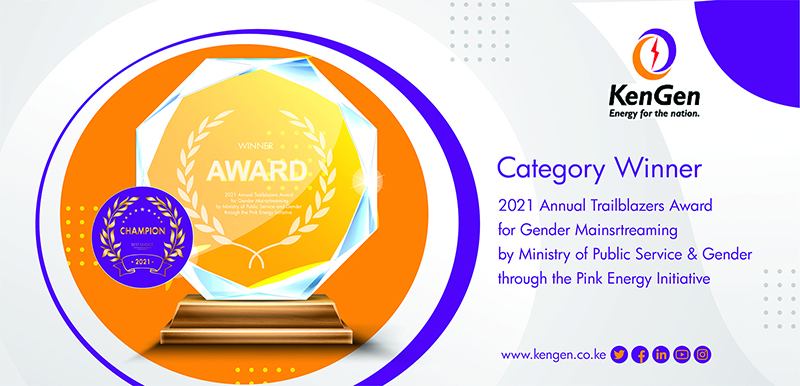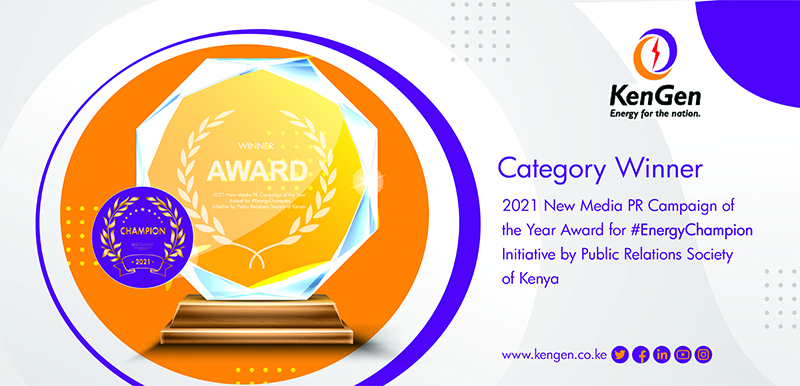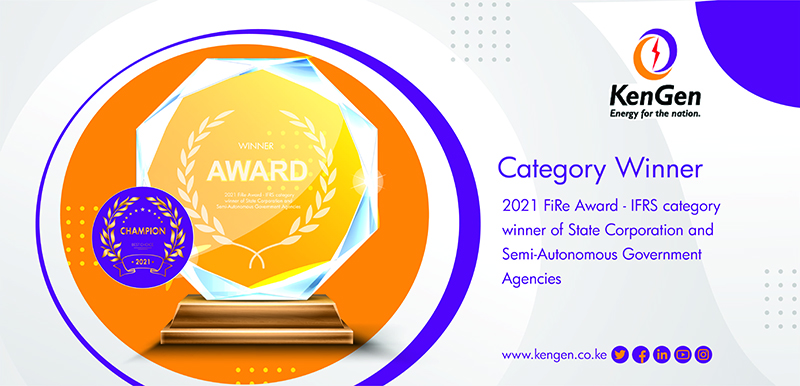By Evelyn Mwaura
KenGen made a powerful impression at the just concluded Accelerated Partnership for Renewables in Africa (APRA) Investment Forum, held in Nairobi, on the 14th – 16th of October 2024. The event, which brought together African ministers, investors, developers, and financial institutions, was a major step toward boosting Africa’s renewable energy capacity to 300GW by 2030, aligning with the #COP28 target to triple global renewable energy output by the end of this decade.
Hosted under the leadership of our parent ministry,Kenya’s Ministry of Energy and Petroleum, the forum marked a pivotal moment in implementing the Nairobi Declaration and advancing the Call for Action to position Africa as a leader in the global green energy transition. For KenGen, the forum was an opportunity to showcase its critical role in driving Kenya’s energy transformation, which has seen the country achieve over 92% of its electricity generation from renewables, with KenGen contributing more than 50% to this milestone.
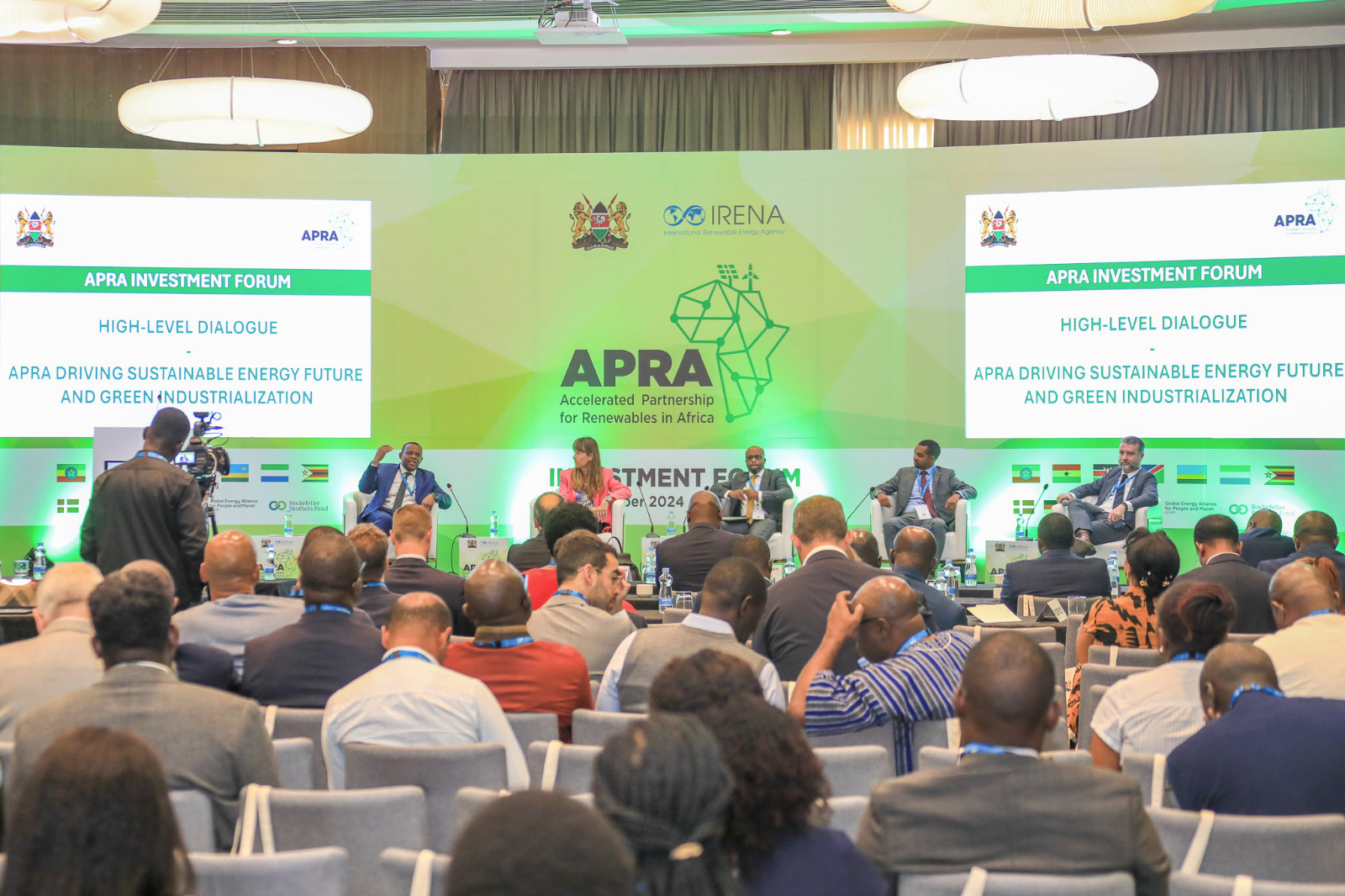
Kenya’s renewable energy success story is deeply tied to KenGen’s visionary leadership. Over the years, the company has expanded its geothermal capacity significantly, positioning Kenya as a global leader in geothermal energy. The Olkaria Geothermal Complex, which supplies more than 754MW of electricity to the national grid, has been instrumental in reducing the country’s reliance on fossil fuels, cutting carbon emissions, and ensuring that Kenya remained on track to meet its climate goals.
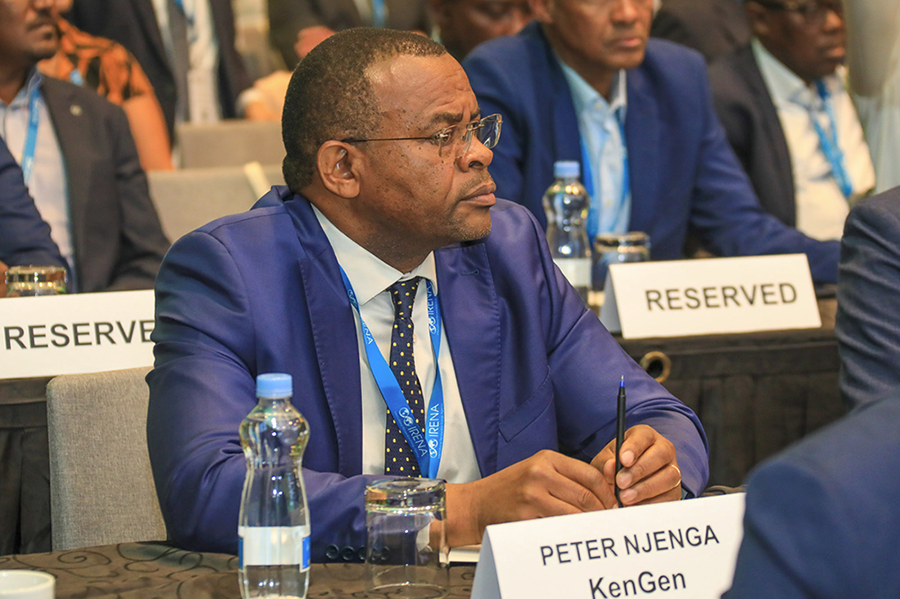
Specially invited, and speaking during the APRA Investment Forum on a panel discussion themed “APRA Driving Sustainable Energy Future and Green Industrialization”, was our very own captain, Eng. Peter Njenga, who highlighted the company’s long-term commitment to leading Africa’s green energy transition. “KenGen is proud to be at the forefront of Africa’s energy transformation. Our geothermal resources, especially at the world-class Olkaria Geothermal fields, have reshaped Kenya’s energy landscape and set the pace for what is possible across the continent, making Kenya the 7th largest geothermal energy producer globally! We are committed to playing our part in helping Africa achieve 300GW of renewable energy by 2030, fully aligned with the global COP28 ambitions,”said Eng. Njenga.
The APRA forum represented a new era of collaboration for Africa’s green energy future. With participation from
countries such as Ethiopia, Ghana, Namibia, Rwanda, Sierra Leone, Zimbabwe, and Kenya, the forum created a unique platform to align international cooperation with Africa’s renewable energy priorities. The event featured not only highlevel discussions but also matchmaking sessions where project developers engaged with financial institutions, ensuring that renewable projects across the continent gained global exposure and vital funding.
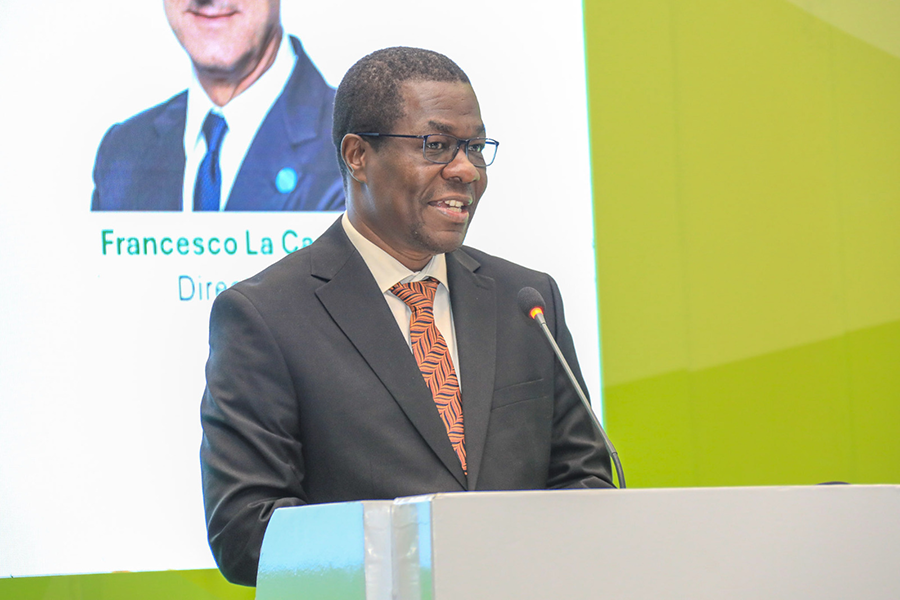
Reflecting on the forum’s significance, Hon. Opiyo Wandayi, Kenya’s Cabinet Secretary for Energy and Petroleum,
said, “Under President Ruto’s leadership, Kenya has played a pivotal role in championing the Nairobi Declaration and APRA, positioning our country as a leader in Africa’s energy transition. The APRA Investment Forum was a critical milestone, mobilizing investments that will support sustainable development across Africa while advancing global energy transition goals.”
Hon. Wandayi’s statement emphasized Kenya’s leadership in global climate action, with both the government
and KenGen playing central roles in fulfilling commitments made during the 2023 Africa Climate Summit. These efforts have been instrumental in Africa’s commitment to unlocking crucial climate finance, which will help the continent realize its ambition of powering economic growth through renewable energy. Francesco La Camera, the Director-General of the International Renewable Energy Agency (IRENA), which serves as the secretariat for APRA, praised the forum, saying, “The success of global climate objectives is closely tied to Africa realizing its vast renewable energy potential.
APRA sets a new standard for international cooperation,ensuring that support from the Global North complements Africa’s renewable energy priorities. The inaugural investment forum in Nairobi was a milestone in this alignment, bringing key stakeholders together to mobilize finance and turn Africa’s renewable energy ambitions into tangible outcomes.”Joseph Nganga, Vice President for Africa at the Global Energy Alliance for People and Planet (GEAPP), further highlighted APRA’s importance in unlocking critical climate finance to connect 300 million unelectrified Africans to clean, affordable energy by 2030. “APRA’s inaugural forum is built on the momentum of the 2023 Africa Climate Summit (ACS), accelerating progress toward net-zero emissions.
By aligning with efforts from the GEAPP, World Bank, African Development Bank, and other partners, APRA is creating pathways for economic growth, job creation, and climate resilience across the continent,” said Nganga.KenGen’s participation in the APRA Investment Forum was not only symbolic but also demonstrated the company’s dedication to fast-tracking Africa’s renewable energy growth, driving green industrialization, and promoting climate resilience. As a cornerstone of Kenya’s energy sector, KenGen has long shown that investing in renewables, particularly geothermal, is the path forward for sustainable development in Africa.
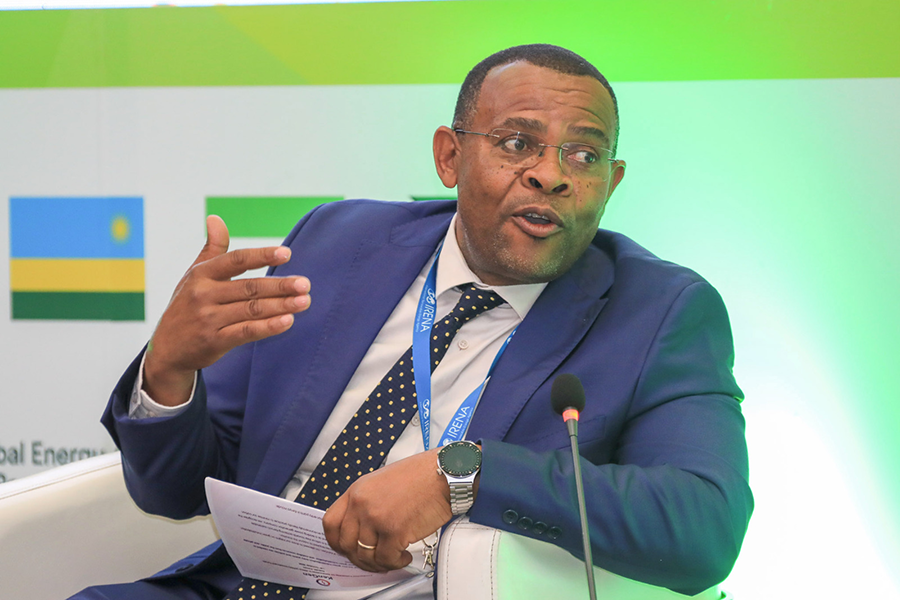
Through continued investment in geothermal technology and innovative projects, KenGen is laying the groundwork for Africa’s green energy revolution. As Eng. Njenga emphasized, “KenGen’s mission is to power a better future for Africa, not just generate power. By 2030, Africa will be a global leader in renewable energy, and KenGen will be at the forefront of that transformation.”
As the APRA Investment Forum ended, it was clear that the discussions held during the event would shape Africa’s renewable energy future for decades to come. With stakeholders aligned, the forum set the stage for a new chapter in Africa’s energy transition—a chapter where KenGen’s leadership and Africa’s renewable potential meet global cooperation to create a future powered by clean, sustainable energy.
For KenGen, this is just the beginning. As the continent works to scale up its renewable capacity to 300GW by 2030, and with the newly launched 2024-2024 strategy being our guide, KenGen will continue to be a driving force, ensuring that Africa’s green energy revolution not only meets but exceeds global expectations.
By Evelyn Mwaura
It was KenGen to the world as the inaugural webinar for the second edition of The Energy Post was held Friday last week in what was nothing short of spectacular. The webinar brought together over 350 participants, all tuned in for two hours, twenty-five minute, of thought -provoking conversations.
This inaugural webinar attracted carefully selected panelists, including renowned leaders in energy policy, climate change, and industrialization. It was an inspiring occasion, giving
attendees a front-row seat to the insights shaping Africa's energy future. The discussions covered a wide range of topics, ensuring that no stone was left unturned in the quest for sustainable energy solutions.

The event kicked off with a discussion by KenGen’s Marketing and Corporate Communications Manager, Frank D. Ochieng, who set the stage by sharing highlights from his exclusive interview with Erik Fernstrom, the World Bank's Practice Manager for Energy in East Africa. He went on to paint a picture of Africa’s green transition, discussing the role of international funding and the infrastructural hurdles the continent faces.
In that Energy Post’s lead story, Fernstrom emphasized the urgent need for partnerships to drive universal access to clean energy in Kenya and neighbouring countries, offering a bold vision for Africa's energy future.
This was followed by KenGen’s Assistant Manager, Emmanuel Wandera's thought provoking take on energy cooperation within the Eastern Africa Power Pool (EAPP), and how opening doors to private energy players could boost energy access across the region.
Wandera highlighted that collaboration between governments and private players is essential to creating a more robust and sustainable energy network for Eastern Africa.
Senior Communications Officer, NuPEA, Purity Mawia, representing Albert Barongo, tackled the audience with a challenging question, “How does the public equate success
amidst a climate crisis?” Her perspective on Africa's climate future raised discussions on the need to balance economic growth with environmental stewardship.

Daniel Thuo, an experienced energy economist, took the discussion to another level with his focus on green industrialization as a critical pathway to Kenya's energy
transition. Thuo’s analysis outlined how Kenya could set itself apart as a leader in renewable energy, driving both domestic growth and international investment.
Elizabeth Gakunga, a budding geologist and a former intern at KenGen, contributed a refreshing, Gen-Z perspective on why "Green energy is not just a saviour for our economy but for our future," a topic which she passionately argued.
Then came in George Aluru, CEO of the Electricity Sector Association of Kenya (ESAK), who delved into Kenya’s electricity sector in 2023-2024, and what the future looks like, addressing the challenges and opportunities ahead.
Adding a twist to the conversation was Anthony Kahindi, whose controversial article on the retirement of thermal plants stirred debate.

As many advocated for a complete transition to green energy, Kahindi argued that thermal plants still hold value, particularly in coastal regions where infrastructure challenges remain. His bold assertions prompted the audience to rethink their positions on energy transition, making for one of the most engaging segments of the webinar.
The discussions did not stop there. The University of Nairobi Engineering Students Union, who had a special invitation as audience, engaged in the conversation, voicing their optimism for the future and their commitment to the energy sector.
A special shout out to the event’s moderator, Judith Mbogo, a Senior Marketing and Communications Officer at KenGen, who with her poise, charm, and command of the
energy sector kept the audience captivated throughout the session.
As the session drew to a close, the audience, both online and in-person, expressed immense gratitude for the panelists' contributions. Their insights, drawn from real-world experience and cutting-edge research, made this webinar not just an informative session but a transformative experience. It was clear that the conversations sparked during the event would continue to resonate in the energy community for a long time.

The overwhelming success of this webinar has set the bar high for future editions of The Energy Post. Attendees left the session eager to engage with the content of the magazine, many taking to social media to express their admiration and commitment to contributing to future issues. As one attendee noted, “This wasn’t just a webinar; it was the start of something much bigger – a movement toward a greener, more sustainable
Africa.”
Our counterparts at Uganda's Electricity Regulatory Authority, led by the Director of Corporate and Consumer Affairs, J. Julius Wandera, expressed their sincere gratitude for the opportunity to participate in The Energy Post live webinar. He mentioned that he was looking to build a similar initiative at the Uganda’s regulatory authority.
For those who missed the live session, the recorded version is now available on KenGen’s YouTube channel, click HERE.
A downloadable digital copy of The Energy Post Magazine can be found HERE.
So, whether you are a seasoned expert or a passionate newcomer in the energy space, the invitation is open to contribute your stories, ideas, and innovations. After all, the
future of energy in Africa depends on collaboration, innovation, and a shared commitment to sustainability.
Page 1 of 9


